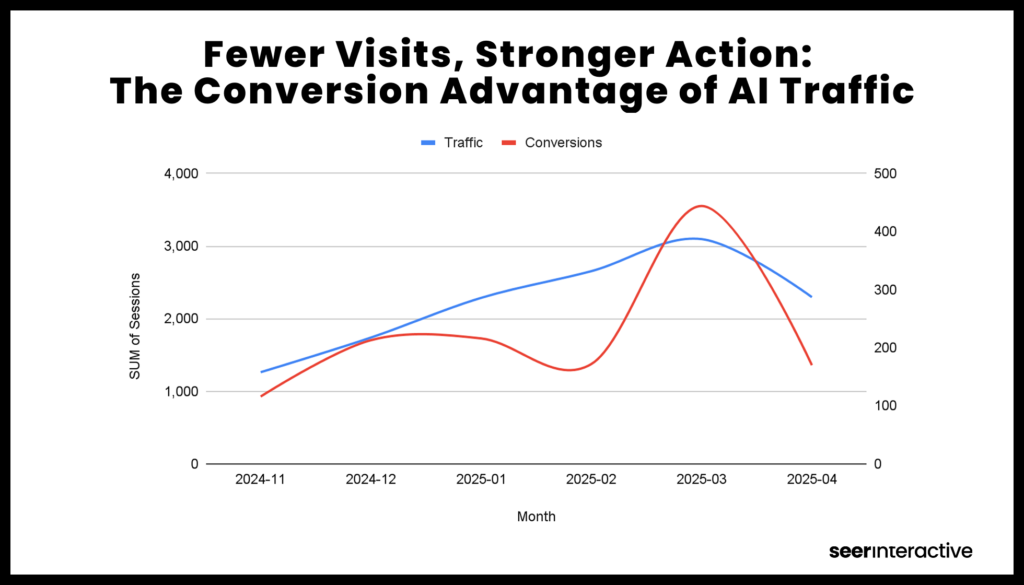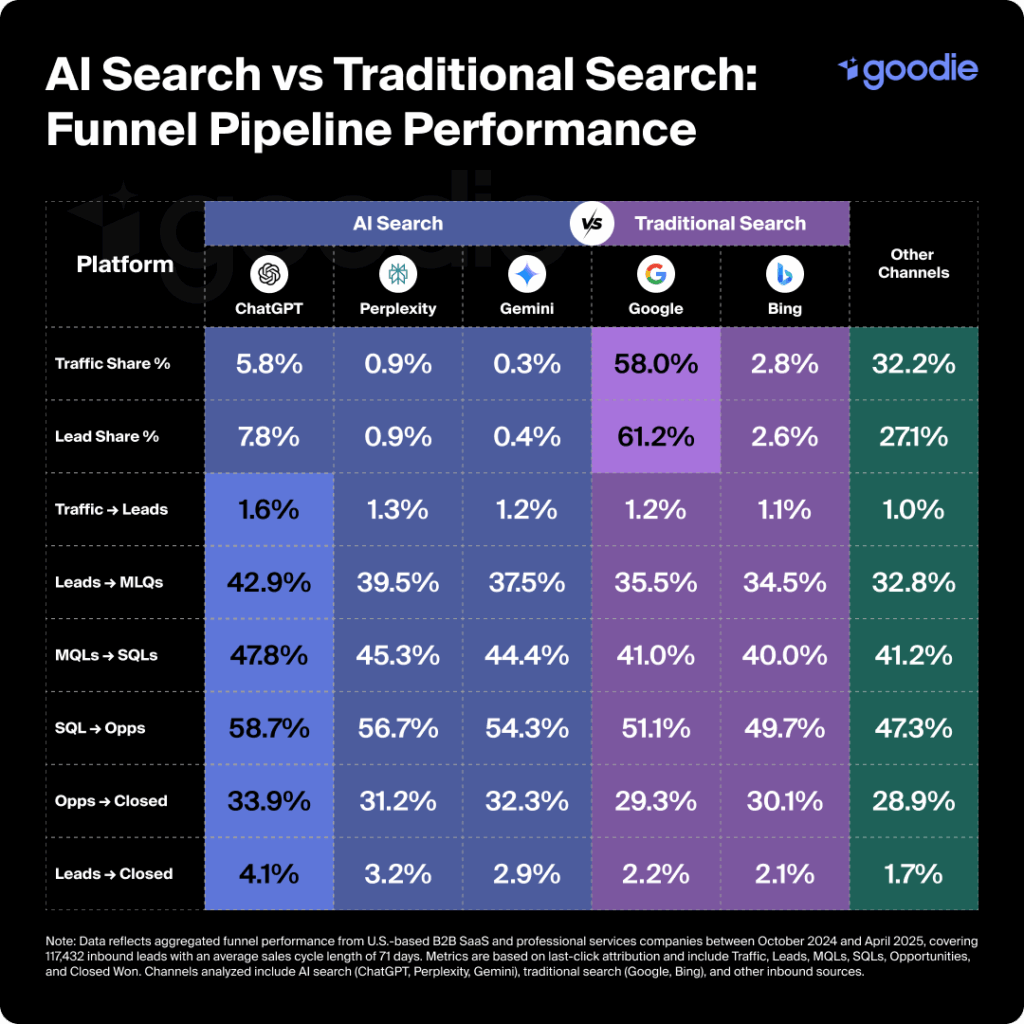Update: Google have shared their own thoughts on quality of traffic coming from AI – read more here.
The increase in use of AI powered tools like ChatGPT, Perplexity, Claude, and Google’s AI Overviews and AI Mode is transforming how users discover content. While traditional SEO has long dominated organic user acquisition strategies, the emergence of AI-driven answers is shifting the focus and putting more attention on quality over volume.
In a world where attention is scarce and zero-click search is on the rise, the big question is no longer “how much traffic?” but “what kind of traffic?”
Is AI growing it’s share of search volume over Google?
We don’t believe any brands should be choosing between AI search and Google as if it’s a case of having to pick one over the other. SEO is not dead, and Google is not going anywhere. But it’s hard not acknowledge the shifting search behaviour, and some of the important differences between SEO and GEO.
Research from clickstream data provider Datos recently highlighted that in the United States, the share of users that went to chatbots rather than traditional search engines reached 5.6% in June, up from 2.48% in June 2024 and 1.3% in January 2024. While Google still commands the lion’s share of search activity, the growth of AI tools suggests a new class of traffic is emerging.
Are AI referral traffic conversion rates higher than Google?
Recent studies are starting to uncover a surprising pattern: AI search traffic, while lower in volume, may be significantly higher in quality.
- Ahrefs (June 2025) reported that AI search accounted for just 0.5% of their total visits, but drove 12.1% of all new signups. That’s a 23x higher conversion rate than organic search.
- These users also viewed 50% more pages per visit and had lower bounce rates, suggesting higher engagement.
In other words, AI referrals might be smaller in number, but they punch well above their weight.
Platform specific performance: ChatGPT and Perplexity
The picture becomes even clearer when looking at individual AI platforms.

A Seer Interactive case study found:
- ChatGPT accounted for 61% of AI-driven visits, Perplexity ~24%, Gemini ~15%
- AI visitors viewed an average of 2.3 pages/session compared to 1.2 for Google organic
- Engagement rates for AI referrals were on par with organic (~60%) but delivered 100% more attributed conversions year-on-year (Seer Interactive)
These tools appear to act as mid-to-late funnel accelerators: users arrive more qualified, more curious, and more ready to act.
Does AI SEO traffic convert higher in B2B SaaS?
We love this data study from Goodie showing a 56.3% higher close rate from leads that originated in AI search agents compared to Google or Bing.
Out of all the platforms analysed, ChatGPT was the most efficient B2B traffic source that they identified with nearly double the lead:close rate of traditional search engines.

For B2B marketers, this means vertical context matters. But even modest AI visibility can yield strong ROI if aligned to the right funnel stage. Whilst Google was still leading top of funnel referral traffic, ChatGPT was clearing referring better quality, ready to convert traffic.
Why do AI referrals convert better?
Several factors may explain the high performance of AI referred traffic over Google referred traffic:
- LLM tools act as buyer enablement engines: they answer specific questions aligned with real problems
- Users arrive further down the funnel: often in exploration, comparison, or evaluation stages
- Less noise, more relevance: AI links are often more direct and intentional than search listings
The result? Higher commercial intent and better conversion efficiency.
Final thought: Smaller volumes, higher stakes
In the age of AI native B2B buyer journeys, it’s not just about reaching more people – it’s about reaching the right ones. B2B SEO has always been about quality over traffic, but at FirstMotion we think that’s more important than ever now.
AI tools may deliver fewer users, but if those users convert at 10x or 20x the rate, the economics shift dramatically. As visibility in these tools becomes more competitive, now is the time to build an AI first visibility strategy that drives revenue, not just rankings.